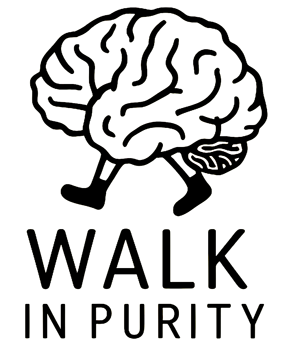In the world of addiction recovery, people often ask a fundamental question: “Can addiction be cured, or is it something we must manage over a lifetime?” This question goes beyond semantics. It influences how we view ourselves, our capabilities, and our future when dealing with addiction. For many, understanding the difference between managing and curing addiction is crucial for sustaining long-term recovery.
Addiction: Disease or Behavioral Condition?
The idea that addiction is an illness—something that can be “cured”—is widely accepted, especially by institutions like the American Medical Association, which defines addiction as a chronic brain disease. But others argue that addiction is more a mix of psychological, behavioral, and environmental factors than a disease. This perspective shifts the focus from trying to “eradicate” addiction to understanding and managing the patterns that drive it. When we view addiction as a behavioral condition, it opens the door to practical methods for managing the compulsions and impulses at its core.
Why Managing is Not the Same as Struggling
Managing addiction doesn’t mean living in constant fear of relapse. Instead, successful management is more about knowing your triggers, understanding the nature of your brain, and developing tools to stay grounded. People who have reached sobriety often report they don’t feel like they are fighting a battle every day. They have built a structure in their lives that keeps them healthy—emotionally, physically, and spiritually.
The Inner Child Model: Understanding the “Why”
One approach that’s gained recognition in addiction treatment is the Inner Child Model, pioneered by Eddie Capparucci. The idea behind this model is that understanding the “why” of addiction is essential to recovery. The theory suggests that many of our addictive behaviors stem from unresolved emotional wounds formed in childhood. These wounds, or “pain points,” can trigger a desire for comfort, which for some may translate into harmful behaviors like sex or porn addiction.
How the Inner Child Influences Addiction
When a person with an addiction encounters a negative situation, their inner child often takes over. This “inner child” looks to past painful experiences to process the present, often leading to emotional responses that fuel addictive behaviors. By understanding and addressing these triggers, individuals can learn to manage their responses rather than fall into old, harmful patterns.
Key Principles for Managing Addiction
Managing addiction requires a set of tools and consistent effort. Here are several principles that can help individuals stay ahead of their addiction:
- Recognize susceptibility: Understand that your brain may be prone to overstimulation, making it easier to turn to addictive behaviors.
- Prioritize self-care: Staying mentally, physically, and spiritually healthy is essential in managing addiction long-term.
- Identify triggers: Knowing what activates your inner child allows you to prevent triggers from taking over.
- Build connections: Forming healthy relationships with others and with God can provide the support and fulfillment addiction could not.
- Seek help when needed: Reaching out before temptation becomes overwhelming is a crucial part of managing addiction.
The Inner Child Recovery Process (ICRP)
Capparucci’s Inner Child Recovery Process for Sex and Porn Addiction (ICRP) focuses on empowering individuals with knowledge about their emotional triggers. Through ICRP, people learn to stay one step ahead of their addiction by identifying and addressing the emotional pain points that drive their addictive behaviors. This approach provides the tools to recognize when their inner child is reacting to a past wound and offers strategies for handling those reactions healthily.
The Benefits of Inner Child Therapy
Inner Child Therapy can offer several specific benefits to those struggling with addiction:
- Answers the “why”: Provides insight into the root causes of addiction.
- Reduces compulsive behaviors: By lowering anxiety, individuals are less likely to turn to addiction for relief.
- Promotes mindfulness: Being present can help individuals identify triggers and make conscious choices.
- Encourages outward focus: Shifting focus from oneself to others can improve relationships and emotional health.
- Improves emotional intelligence: Learning to process emotions healthily strengthens resilience and relationships.
Real-Life Impact: Testimonials and Expert Insights
Professionals in addiction treatment, like Robert Weiss and Jonathan Daugherty, see value in the Inner Child Model for those in recovery from sex and porn addiction. They suggest that focusing on the inner child helps to uncover deeper emotional triggers, providing a roadmap for long-term change. This approach has been praised for helping individuals move beyond symptom management and focus on healing the root causes of their addiction.
Moving Toward a Healthier Future
True recovery isn’t about “managing addiction” forever; it’s about managing the behaviors that once held power over us and choosing to live free of them. As individuals progress, they reach a point where it’s no longer about battling “addiction” but about staying aware of their actions, motivations, and the emotions that drive them. Those who succeed in this journey learn to rewrite their story, stepping out of old patterns and embracing a new mindset rooted in self-awareness and compassion rather than judgment and shame.
This path to freedom becomes less about what we’re avoiding and more about building a life filled with purpose, resilience, and connection. By addressing the root causes of past struggles and reconnecting with the wounded inner child, individuals move beyond surface-level fixes. They discover the strength to lead lives defined not by struggles or temptations but by courage, commitment, and newfound joy. Real freedom is found not in fighting old battles but in creating a future grounded in values, resilience, and lasting peace.
Learn More About Inner Child Healing
If you’re interested in learning more about the Inner Child Model and addiction recovery, visit the following resources:


Leave a Reply